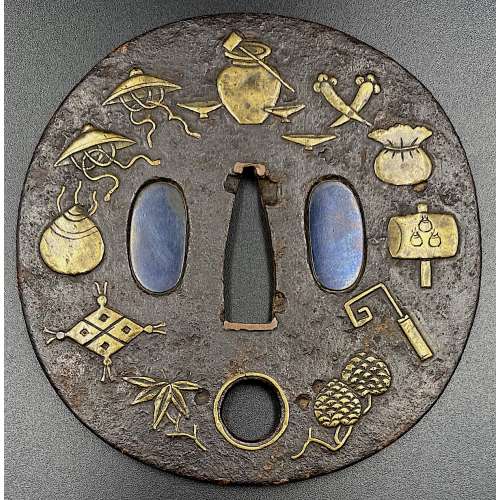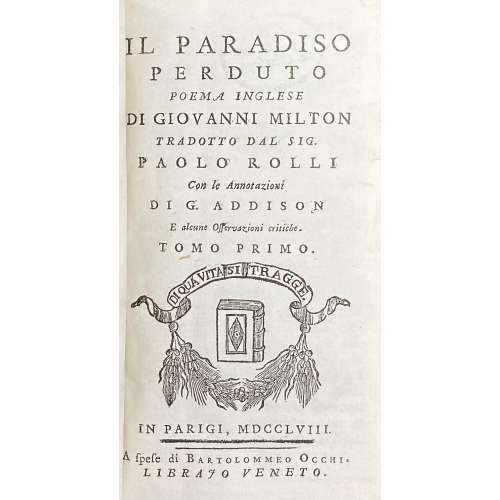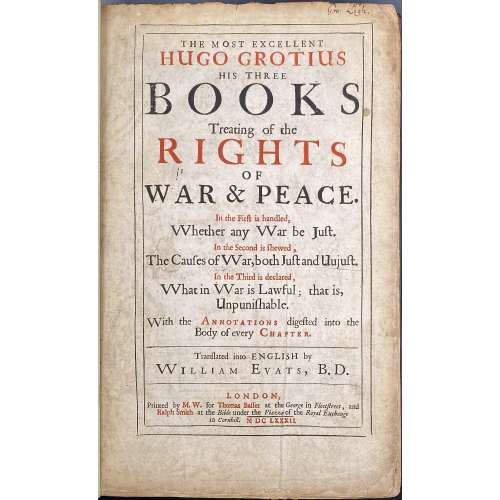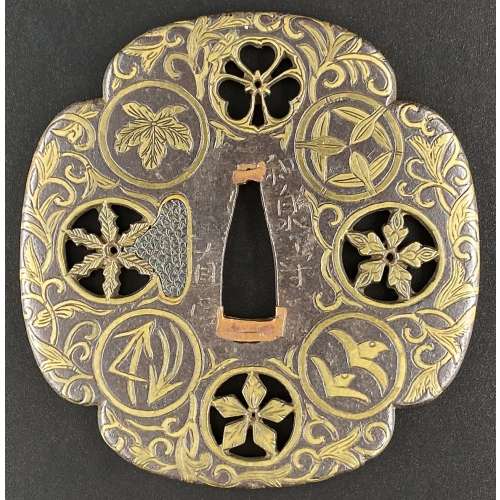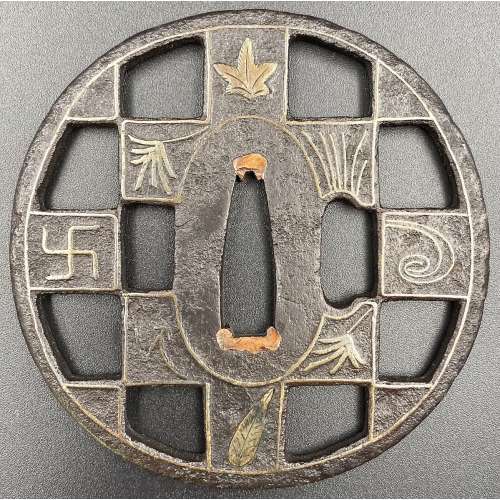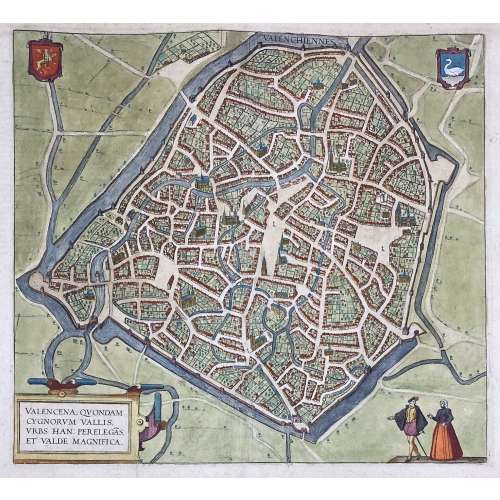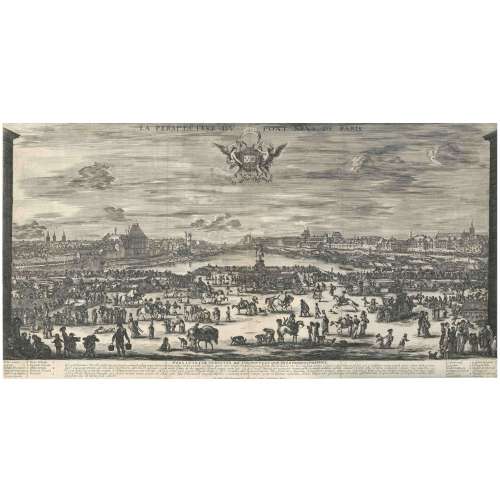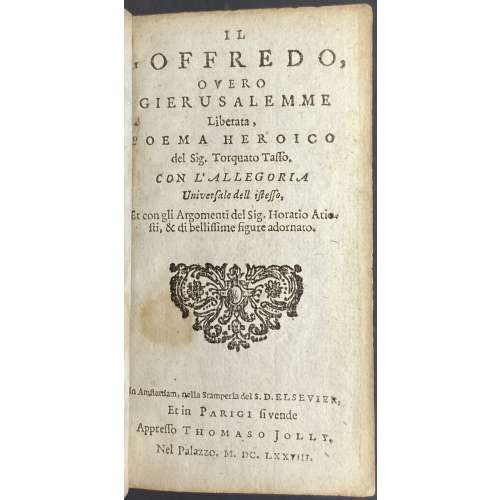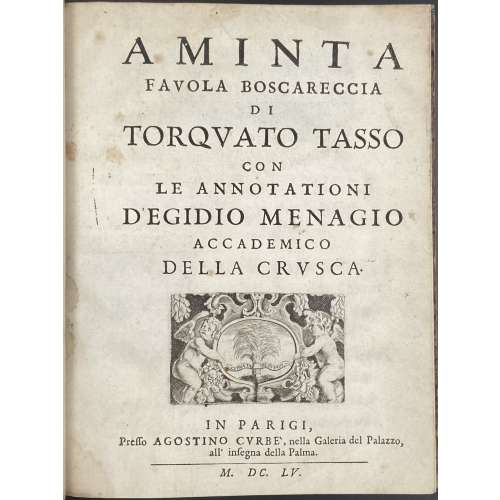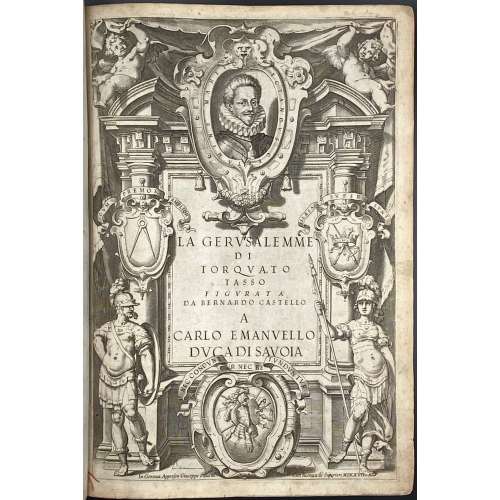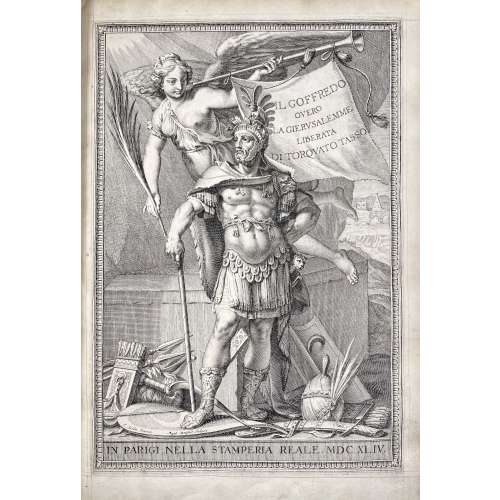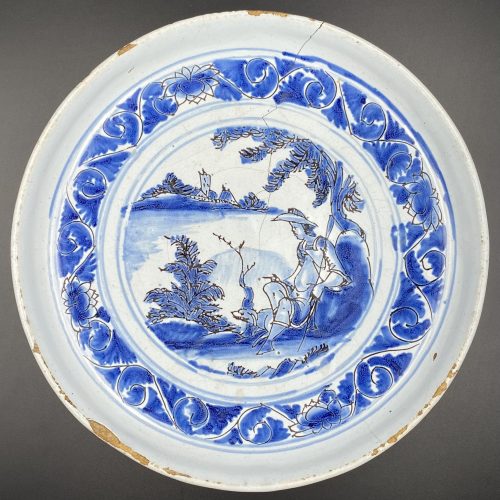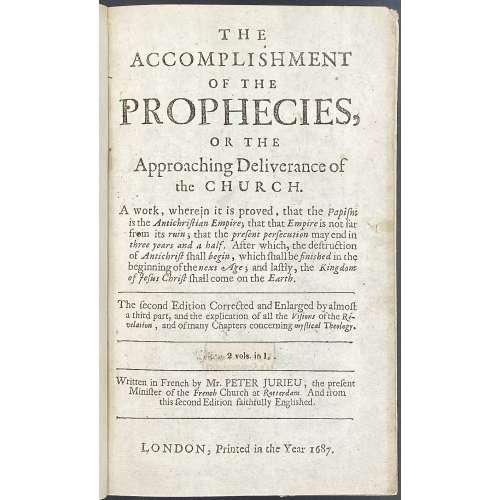Engraved title-page 1, as per
British Museum: An architectural setting with, at upper centre, a portrait of Carlo Emanuele I, Duke of Savoy, in an ornate cartouche lettered “"Spectandus Certamine Martio"; a central title “LA | GERUSALEMME | DI | TORQUATO | TASSO | FUGURATA A | DA BERNARDO CASTELLO | A | CARLO EMANUELLO | DVCA DI SAVOIA” flanked by Tuscan columns and crests with mottos and imprese showing compasses lettered "Dvm Premor Amplior", at left, and a crossed sword and sceptre with a crown lettered "Illaesa Super Sunt", at right; in the lower register, male and female figures in armour, perhaps representing Tancredi and Clorinda, with a central crest showing an impresa of armour”. Central title: Below, within frame: "In Genova, Appresso Giuseppe Pavoni. […] Con licenza de' Superiori. MDCXVII."
Engraved title-page 2, as per
British Museum: Portrait of Torquato Tasso, bust, facing front, wearing a laurel crown; within an oval pendant, lettered “TOROVATO […] TASSO EF”, suspended from a pediment, beneath which a view of Genoa is flanked by two columns, and above is a tablet, lettered: “LA GERUSALEMME | LIBERATA | DI TORQUATO | TASSO. | Con le annotazioni | di Scipion | Gentili, e di Givlio | Guastauini , | Et li argomenti di Oratio Ariosti , | STAMPATA | Per Giuseppe Pauoni ad instanza di | Bernardo Castello,in Genova | L’Anno MDCXVII."
Collation: 8vo; 2 leaves of engraved title-pages, 1 leaf signed †
2, 1 leaf unsigned, 2 leaves signed †† and ††
2, respectively, 1 leaf unsigned, 1 leaf with engraving to verso (frontispiece to Canto Primo) —> 8 prelims (besides FEP or a blank leaf before 1st t.p.); π8 A-Q8 (pp. 1-255 [256 blank], plated within collation), G
1, I
1, K
1, O
1, and P
1 (recto to plates without text) unsigned, L
3 signed as second L
2; A-D
8 E
4 (pp. 1-71 [72]; A-B
8 C
4 χ
1 (pp. [1] 2-36 [37-40] [2]), in the 4-leaf quires E and C only two first leaves signed, in the 8-leaf quires four first leaves signed.
Illustrations: woodcut head- and tail-pieces, woodcut initials, some historiated, and 20 plates within collation and pagination engraved by Camillo Cungio after Bernardo Castello.
Binding: 30.5 x 21.4 cm overall, 30 x 20.5 cm leaves; contemporary vellum, rebacked with modern brown morocco, crimson morocco label with gilt lettering and double-fillet outline. Two bookplates to front pastedown: (1) Chippendale armorial bookplate (8.3 x 7.6 cm): Tho
s. Brand Esq
r. Signed: W Austin — Fecit; (2) The Robin Collection bookplate. Bookseller’s ticket to back pastedown: “J. POOLE. | British & foreign | BOOKSELLER, | 39 BOOKSELLERS ROW, | STRAND |〰️| Books Bought.” All edges green.
Provenance: The Robin Collection;
Thomas Brand Hollis (British, 1719 – 1804).
Contributors:
Torquato Tasso (Italian, 1544 –1595) – author.
Scipione Gentili [Scipio Gentilis] (Italian, 1563 – 1616) – author.
Giulio Guastavini (Italian, fl. 16th century) – author.
Bernardo Castello [Castelli] (Italian, 1557 – 1629) – artist.
Camillo Cungi (Italian, fl. 1597 – 1649) – engraver.
Giuseppe Pavoni (Italian, 1551 – c. 1641) – printer, publisher.
Carlo Emanuele I, Duke of Savoy (Italian, 1562 – 1630) – dedicatee.


